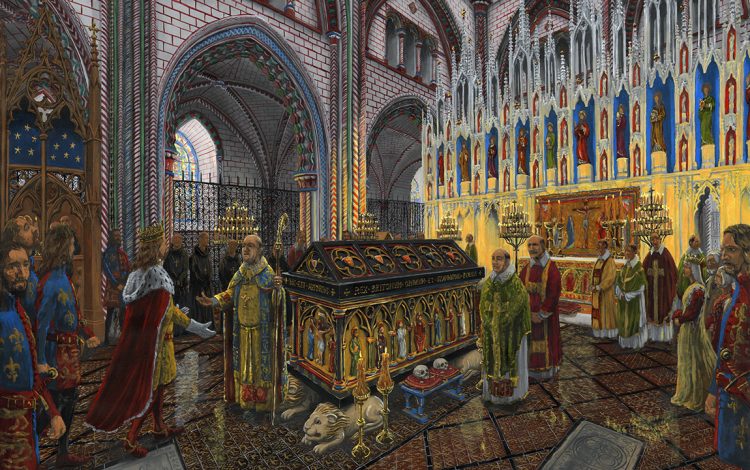Melodi
Disaster Cat
When I first saw this headline I was extremely skeptical - archeologists (especially in some places) love to make fantastical claims that sound exciting to the public, but then I got chills when I read the last paragraph as that plaque/inscription I believe is referred to in the ancient sources. So, if it isn't a hoax (always has to be considered)exactly what the possibility of finding "The Trojan Horse" right now is I'm not sure, but I suspect somewhere Casandra is trying to say something....Melodi
 www.jpost.com
Did archaeologists find the Trojan Horse?
www.jpost.com
Did archaeologists find the Trojan Horse?
Turkish archaeologists excavating the site of the city of Troy on the hills of Hisarlik have discovered a large wooden structure that they believe are the remains of the famous Trojan Horse.
By JERUSALEM POST STAFF
AUGUST 10, 2021 17:22





Depiction of the story of the Trojan horse in the art of Gandhara. British Museum.
(photo credit: Wikimedia Commons)
Archaeologists who claimed they had unearthed remnants of the legendary Trojan Horse in Turkey have now found significant evidence that further supports their claim, according to an article by the Greek Reporter.
Turkish archaeologists excavating the site of the city of Troy on the hills of Hisarlik have discovered a large wooden structure that they believe are the remains of the Trojan Horse. These excavations include dozens of fir planks and beams up to 15 meters (49 feet) long, assembled in a strange form.
The wooden structure was found inside the walls of the ancient city of Troy.
Now, Boston University professors Christine Morris and Chris Wilson believe that "the carbon dating tests and other analyses have all suggested that the wooden pieces and other artifacts date from the 12th or 11th centuries BC."
Morris and Wilson believe with a "high level of confidence" that the structure is linked to the iconic horse. They say that tests have only confirmed their theory.
“This matches the dates cited for the Trojan War, by many ancient historians like Eratosthenes or Proclus. The assembly of the work also matches the description made by many sources. I don’t want to sound overconfident, but I’m pretty certain that we found the real thing!”
The Trojan Horse is associated with the Trojan War, written about by Homer in his epic poems the Iliad and the Odyssey. The Iliad closes right before the war ends, so it does not feature the legendary horse.
The Trojan Horse was used to seize Troy and win the war. The story was prominently featured in the Aeneid by Virgil. Historians have suggested that the horse was an analogy for a war machine or natural disaster.
Archaeologists also discovered a damaged bronze plate with the inscription, “For their return home, the Greeks dedicate this offering to Athena.” Quintus Smyrnaeus refers to this plate in his epis poem "Posthomerica."
Middle East and Israel News | All Breaking News | The Jerusalem Post
The Jerusalem Post is Israel's most-read English news website and best-selling English newspaper bringing breaking news, world news & middle east news.
Turkish archaeologists excavating the site of the city of Troy on the hills of Hisarlik have discovered a large wooden structure that they believe are the remains of the famous Trojan Horse.
By JERUSALEM POST STAFF
AUGUST 10, 2021 17:22

Depiction of the story of the Trojan horse in the art of Gandhara. British Museum.
(photo credit: Wikimedia Commons)
Archaeologists who claimed they had unearthed remnants of the legendary Trojan Horse in Turkey have now found significant evidence that further supports their claim, according to an article by the Greek Reporter.
Turkish archaeologists excavating the site of the city of Troy on the hills of Hisarlik have discovered a large wooden structure that they believe are the remains of the Trojan Horse. These excavations include dozens of fir planks and beams up to 15 meters (49 feet) long, assembled in a strange form.
The wooden structure was found inside the walls of the ancient city of Troy.
Now, Boston University professors Christine Morris and Chris Wilson believe that "the carbon dating tests and other analyses have all suggested that the wooden pieces and other artifacts date from the 12th or 11th centuries BC."
Morris and Wilson believe with a "high level of confidence" that the structure is linked to the iconic horse. They say that tests have only confirmed their theory.
“This matches the dates cited for the Trojan War, by many ancient historians like Eratosthenes or Proclus. The assembly of the work also matches the description made by many sources. I don’t want to sound overconfident, but I’m pretty certain that we found the real thing!”
The Trojan Horse is associated with the Trojan War, written about by Homer in his epic poems the Iliad and the Odyssey. The Iliad closes right before the war ends, so it does not feature the legendary horse.
The Trojan Horse was used to seize Troy and win the war. The story was prominently featured in the Aeneid by Virgil. Historians have suggested that the horse was an analogy for a war machine or natural disaster.
Archaeologists also discovered a damaged bronze plate with the inscription, “For their return home, the Greeks dedicate this offering to Athena.” Quintus Smyrnaeus refers to this plate in his epis poem "Posthomerica."



